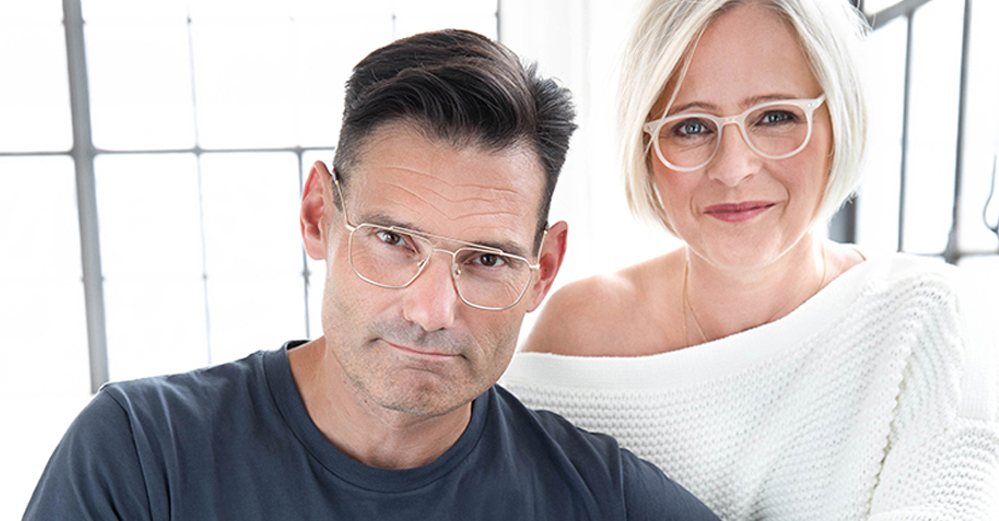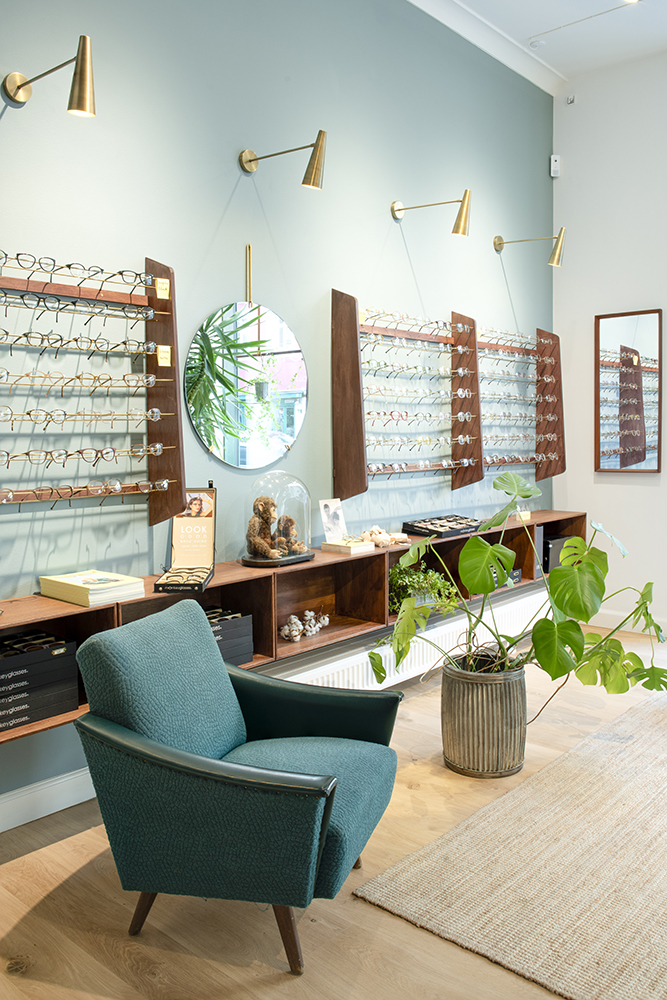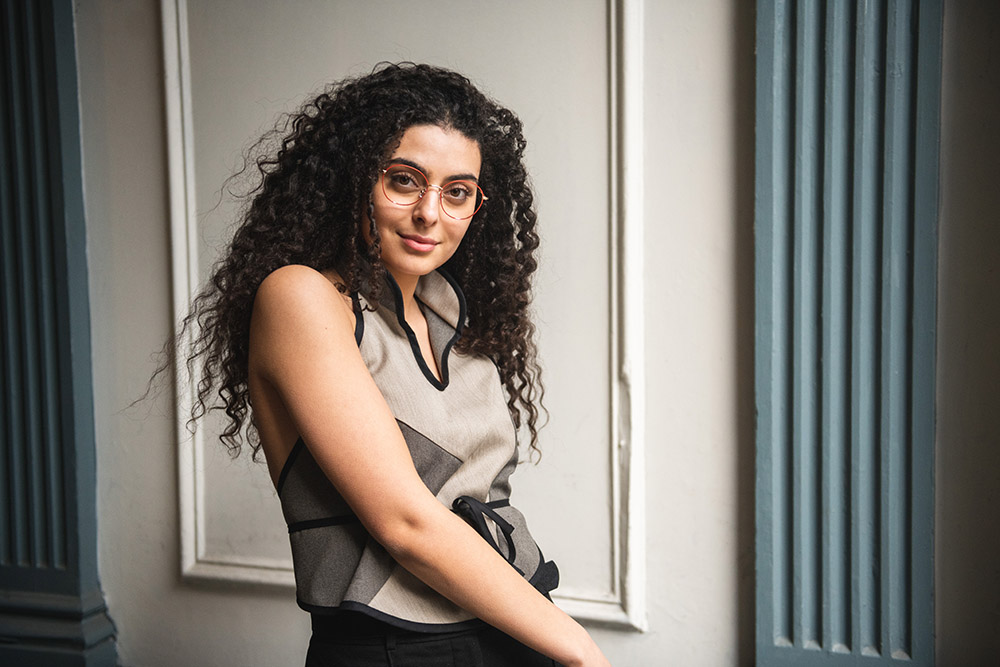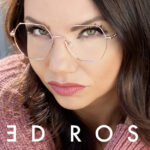Sustainability in eyewear is a hot item and fortunately becoming more and more a standard when it comes to manufacturing eyewear. But being sustainable doesn’t stop at using eco-friendly materials.
Eyewear designer Mai-Britt Seaton, co-founder of the Danish eyewear brand Monkeyglasses, tells us more on how to integrate sustainability throughout your business
Although sustainable eyewear is a hot item these days, to me Monkeyglasses was making it from the start. What gave you the idea to focus on this, all those years ago?
I came from the clothing industry and had seen every aspect of production and consumption. Fashion kept speeding up through the 90’s and 00’s and the wasteful side effects frustrated me.
When we started Monkeyglasses we didn’t jump on some hot trend – because there was no trend yet. Talks across our dinner table became the incubator for the idea – my husband Morten was in the eyewear business and I challenged him to explore whether it was possible to change a rather conservative industry and give it a greener niche.
Our mission shaped itself over some months of dinner discussions: To build a strong, healthy, and honest brand with a clean DNA of sustainability. We were quite clear: We wanted to have a low carbon footprint from the production and be fair to the people that are involved in the process of making our frames.
It has been a long journey, let’s be honest. However, being an icebreaker is equally brutal and awesome and we are so proud to have been first with a strong message of responsible eyewear consumption AND is the products to make the choice easy.
Being sustainable isn’t just about using bio-degradable materials. What other changes did you make to your products to make it even more sustainable?
Sustainable eyewear is so much more than frame materials – every step of the process is crucial, thank you for bringing this up! The UN have made 17 sustainable development goals that we can all be inspired by. We have a specific focus on 9 of the goals, circling around a production that is both environmentally responsible and respectful of the humans involved.
Two years ago we completed our transition to only packing in transportation bags made from recycled paper, so we can proudly say that our entire production and packaging is free from plastic.
Our zero waste production means that the small scraps from the hand building process are remelted into new black material. We are proud and a little nerdy when it comes to up-cycling. We hear a lot about recycling different materials from other producers …. but is it up-cycling or down-cycling?
And apart from production methods and zero waste management, did make any other changes in your company?
In our Copenhagen HQ we had a chance to live out a bunch of our sustainability ideas: Every piece of furniture in the store is pre-loved or built from repurposed materials. Old lamps have been modified to accommodate for low impact bulbs.
Even our (many) plants are pre-loved or grown from cuttings from friends and family – no exotic plants flown in from overseas. Our optical tools are top quality – and all are salvaged from a Swedish optical store that closed.
We are lucky that Copenhagen is an easy city to recycle waste in, so everything in our HQ is sorted and repurposed. Morten and I walk or bicycle to work, like most of our staff.
What does a sustainable lifestyle mean, and are you living one yourself?
We lead an urban sustainable lifestyle in our quite minimal Copenhagen home, where we buy mindfully and with respect
For the true cost of any item, sort all our waste, cycle, love to rebuild old stuff and live a ‘simple living life style’. We have a dog and she is a good reason to get out and enjoy Danish nature on weekends and holidays.
Besides products, manufacturing, and your way of life, are you doing other things to save the planet?
In 2006 I started following the work of the organization Save the orangutan. The Danish woman who founded it, Lone Nielsen, made a huge effort for the Borneo rainforest and the native monkeys. Her passion and results were so impressive, so I loved naming our brand on honor of our monkey-cousins, and not least being able to support this organization financially through our revenue and to create more awareness about the importance of saving the last chances for biodiversity before palm oil production has destroyed it for good.
Another important cause to us is re-using eyewear: Most glasses have many good years left in them when they are replaced due to things like surface scratches to the frame, changed prescriptions or just plain fashion choices. We are lucky to collaborate with “Syn for sagen“ – roughly translated “To see” – a group of optometrists who volunteer to spend their holidays traveling developing countries where they perform eye tests and hand over retired Danish eye wear to new and quite grateful owners.
Tell me about a recent challenge you faced while working on a sustainability project. How did you overcome it?
We all have challenges and we are so happy to do meaningful work – but it is no secret that we pay more for our products than mass productions do. Since it is a central value to us to keep a price that is fair to both the production staff and the end users, we have a quite small margin on our products.
We had a chance to be distributed by a large chain of optical stores, but they are used to negotiating with companies that work on large scale and with large mark-ups. They asked for the products to be packed in poly bags, which is against our core idea. We managed to negotiate a solution where we ship in paper bags as well as gift the end user our foldable hard case made from recycled paper.
It has an extra cost to do what was right for us, but we are proud to stick to our DNA. That defines a success story in my mind.
Were there any projects that didn’t work out?
We wanted to ship to a customer’s warehouse in Thailand from our production in Hong Kong. But because of tax rules and import laws it is not possible to make out our invoices from Denmark to Thailand.
So the products have to travel to Europe and then back to Asia! This is a terrible solution both for the environment and the cost in transport. I learned that even With the best of efforts to think green, some challenges are still to big for us. Yet…!
What is your opinion on making eyewear out of the plastic soup from the ocean? Or you using those materials too?
We encourage innovation and creativity to grow the sustainable field, but so far we do not work with recycled plastics.
Until we have more knowledge about the actual sustainability of this material, we stick to our trusted staples: Plant fibers that are easily renewable and biodegradable, and recycled surgical stainless steel that can be repurposed over and over with no loss of quality.
Do you feel that more brands will be focusing on sustainability?
Yes, absolutely and it is needed. We all have to make an effort every day in our daily lives, to turn this ecosystem sustainable.
And if you are a manufacturer you NEED to. Either because you want to make money of the consumers who are ready to vote with their money, or simply because they care as much as we do – Don’t we all love our planet?
How do you see sustainable products being used in your client’s store, and do you help them with suggestions?
Some retailers are making a great effort to share the ideas of buying sustainably, e.g. by making separate displays of their green brands. We have a handful of suggestions to focus on these products, through visual attention from well designed POS-materials. In the clothes industry you have the cardboard piece next to the price tag – a hang tag – where you can do some story telling, but in frames, where should we manufacturers pass on our information? There are still some work to do for all of us, before customers even realize they have a sustainable choice.
If eco eyewear becomes more and more a standard, how will Monkeyglasses still remain distinctive?
Monkeyglasses is not just ecologically responsible, but fully responsible in all steps of production, and we hope consumers will honor our serious dedication. It is our exciting task to keep sharing the range of principles in sustainably and the concept of a product’s true cost, to remind consumers that they can make an actual difference with their purchase.
There are so many stories yet to tell about the ways of modern consumption and a lot of need for supporting initiatives like “who made my glasses”, “Save the orangutan”, donation of eyewear, etc.
And not to forget: A truly sustainable frame is not just made from sustainable material – it also long-lasting.
After 10 years in the industry, we can see that if the end consumers like our design, they can keep wearing it, and that sign of quality is noticed from user to user. Most of our customers come for a wide range of designs but stay for our quality.















